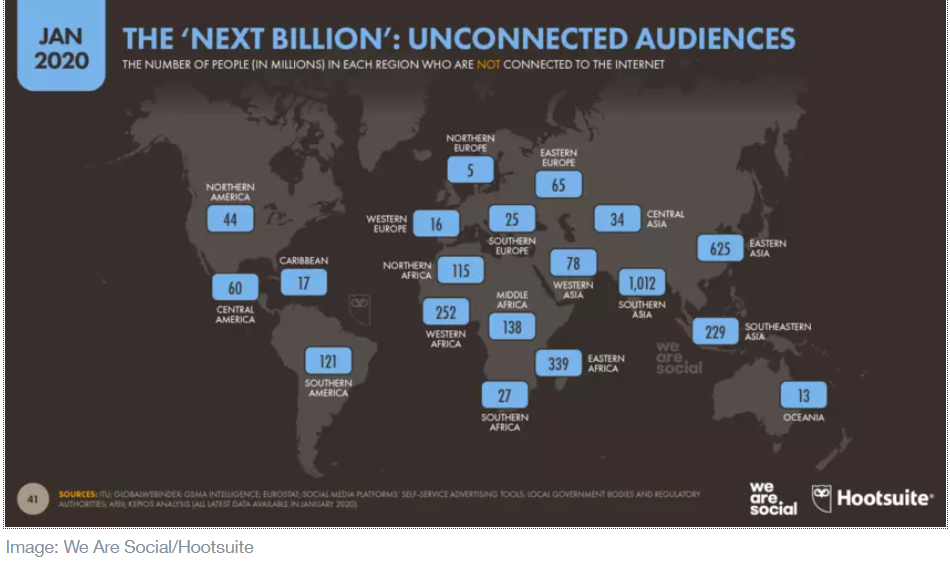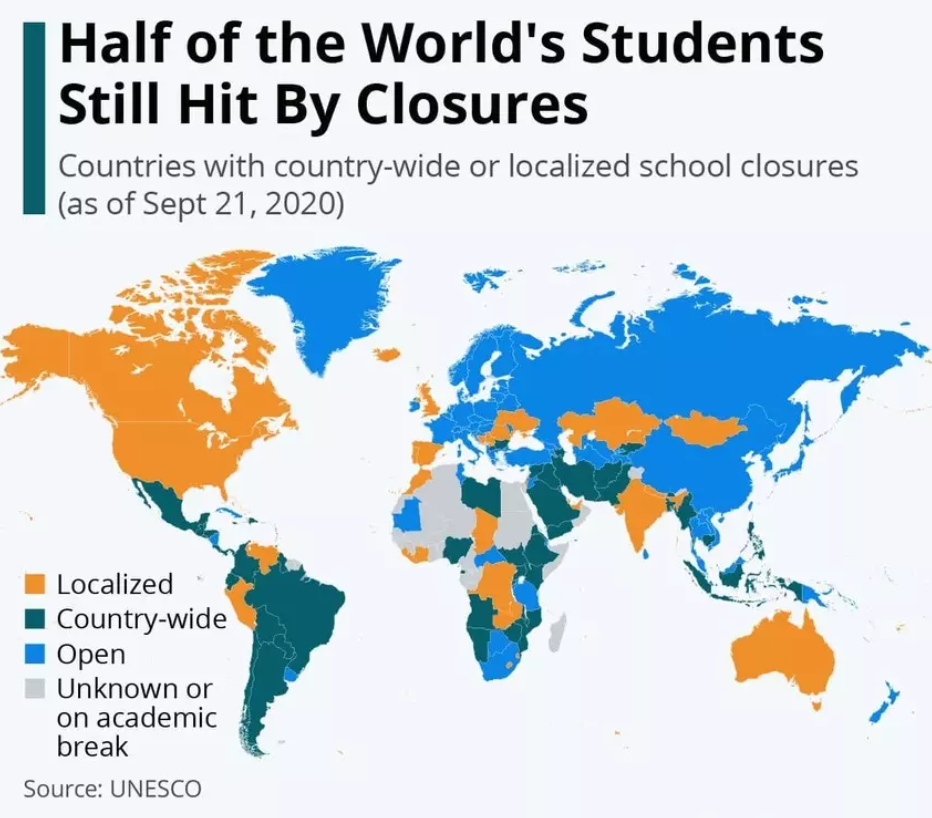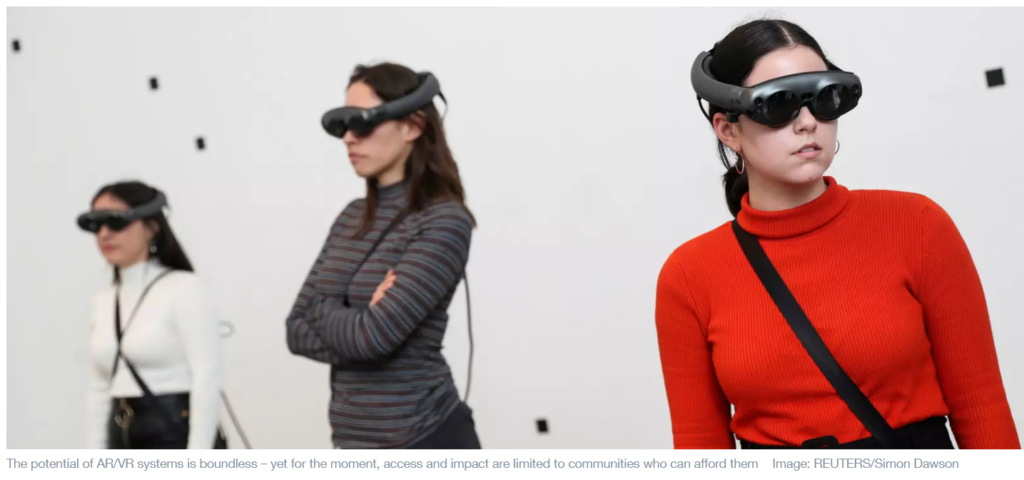- An estimated 3.7 billion people globally are offline and many more do not enjoy a full digital experience;
- Connecting more people to AR and VR technologies could transform everything from education and healthcare to mining and tourism;
- To take AR and VR mainstream, the right technologies must be enabled and local knowledge and support systems must be established.
For the privileged few, augmented reality (AR) and virtual reality (VR) have become commonplace, increasingly used in everything from entertainment and online commerce to healthcare. Many communities, however, still do not experience the real impact of these transformational technologies because of an innovation gap that compounds our digital divides.
Imagine the value of this technology for sectors such as education, mining and tourism, all of which were effectively shut down during the current COVID-19 pandemic. The current global health crisis has shown us how a failure to digitize value chains across sectors has significantly affected social conditions worldwide and highlighted – even exacerbated – the digital divide.
There are two concrete ways to help close the digital divide and enable inclusive digital economies:
- establish a sound enabling environment for digital transformation, and
- foster collaborative digital innovation systems that address “Main Street” problems.
AR/VR is mainstream – but only for a small segment of our digital world
For novices, virtual reality and augmented reality can be considered as simulated experiences, where a scenario is replicated in a digital environment and where users are able to interact with that virtual world using computer-based objects.
If you ask young people about VR or AR, they will probably tell you about that latest headset on the market to play video games or engage with social media. You may have come across the technology yourself without really knowing it: virtual clothes shopping, virtual apartment visits, virtual tourism even high-end industrial solutions, such as professional flight simulators. The potential of AR/VR systems is boundless – yet for the moment, access and impact are limited to the very few communities who can afford them.

According to ITU statistics, an estimated 3.7 billion people remain offline. The majority of the unconnected live in least developed countries, where an average of just two out of every 10 people are online. The UN Broadband Commission recognizes that over half of those who are counted as “connected” still do not enjoy a full digital experience, because of slow speeds and the high cost of devices and/or bandwidth. COVID-19 has shown that we need to work harder to change this picture fast and this is where mainstreaming technology such as AR/VR can play a critical role in delivering meaningful connectivity.
An enabling environment to stimulate digital transformation
How many countries are achieving Sustainable Development Goal 9 which aims to build resilient infrastructure, promote inclusive and sustainable industrialization and foster innovation?
As with many ICT solutions, AR/VR requires a combination of software and hardware underpinned by many other technologies, including 5G for connectivity, video standards for visualization, artificial intelligence for software algorithms and more. One technology depends on another, creating a layered environment that needs careful management. This is where implementing and nurturing an enabling environment is critical, in order to ensure that local innovators are able to address the right problems in their own communities.
While the underlying knowledge relating to a given technology may be widely accessible, the right strategies, policies and programmes are not necessarily in place. An enabling environment allows for the development of a strong talent pool, R&D investment in technology, streamlined access to markets and incentives for private sector investment.
Louis Pasteur famously said: “Chance favours only the prepared mind”. So to make AR/VR ubiquitous, it is critical to establish an appropriate vision for the technology, and to develop the right strategies and policies by, in turn, enabling various underpinning technologies including 5G. Without these technologies the necessary conditions for an immersive AR/VR experience will lag behind. New, enabling infrastructure also needs to be resilient and digitally safe for the entire target population.
In short, achieving SDG 9 means developing the right environment to support digital transformation.
A collaborative system focused on ‘Main Street’ problems
Policy-makers in every country need to ask: are local innovators able to focus on real problems facing their community and to scale their solutions to an effective level?
The COVID-19 pandemic has shown us that the education sector needs to be able to rely on robust digital frameworks. Never has the digital divide been so glaringly apparent as when communities struggled to maintain children’s learning in the face of school closures. A lack of digital networks has also caused widespread public service disruption and seen entire economic sectors grind to a halt, leaving millions unemployed.

Image: Statista
Most schools were wholly unprepared for a crisis of this scale and rushed to offer a limited education experience reliant largely on videoconferencing. Yet, using technologies already widely available, a well-prepared school district would have developed a strategy to include immersive courses in its curriculum, as well as immersive virtual classrooms that offer more interaction between content, students, teachers and parents.
Using AR/VR to augment school education is not new; there are already big players in the field. But, right now, their solutions are not reaching many of the communities that need them. In our digital systems, too much distance separates communities experiencing a problem from resource owners (such as funding organizations or established private sector entities), innovators or solutions owners. A frequent result of this fragmentation is that good, appropriate attempts at solving local problems fail.

Taking AR/VR mainstream requires hardware, software and novel partnerships. In some communities, solutions owners may face prohibitively high barriers to developing a prototype – such as a lack of the prototyping centres, educational programmes, opportunities and resources that trailblazing innovators can take advantage of to develop their ideas before moving to commercialization.
Innovators, resource-owners and problem-owners need access to each other’s resources, know-how and opportunities. Collaboration in fragmented systems can be addressed by stakeholders undertaking joint initiatives and agreeing to a transparent governance model. This is one of the reasons ITU and UNICEF have launched the Giga project to expedite digital transformation in education, including connecting all schools to relevant content including immersive AR/VR content.
Are you ready to take AR/VR mainstream?
Young people in a handful of highly connected nations may argue that VR is already mainstream, but the reality is starkly different for most. AR/VR is a set of technologies that can work as a powerful enabler. Yet to realize its transformational potential, it needs solutions that address real-life problems to the greater benefit of society as a whole.
To take AR/VR mainstream, policy-makers, technologists, innovators, small and medium firms, and large organizations must collaborate. Doing so has the potential to be a powerful driver of progress towards all 17 SDGs and creating fully inclusive digital societies that empower all.
Article Credit: weforum
